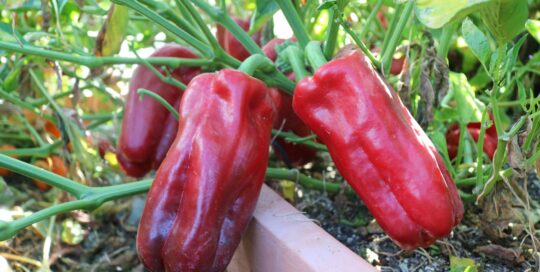Why You Should Rotate Your Crops
Views: 3546

At the start of the 2010 growing season, I did a revamping of my garden layout and worked on crop rotating.
Before, there had been a half-moon brick path that segmented the small plot into two or three odd, hard-to-reach-from-the-path shapes. Having had that layout for several years, I decided to change it up a bit. I went old-school: I adjusted the brick paths to cut the rectangular garden plot into quadrants. I’m happy to say the quadrant layout worked extremely well last year, and I’m glad I did it.
I should add that the first two to three feet going into each quad are occupied by permanent items: two rhubarb plants, a compost and stone pile, and a lavender and euphorbia Bonfire that I just can’t justify pulling up in this nearly veggies-only plot.
One of the quads is also roughly 80 percent herbs, with my infamous carrot box in there as well. But in the space that remains, I’ll mix up the crops from year to year, otherwise known as crop rotating.
Crop Rotating
Crop rotation is a practice that alternates crops grown in a given spot. It’s key in avoiding nutrient depletion and minimizing pests and diseases that occur when one crop is planted in one patch for too long.
In commercial farming, grains, which suck up nitrogen from the soil, are rotated with beans, which have nodules on their roots that contain nitrogen-fixing bacteria. In other words, bean crops are able to bring their own nitrogen to the party. One crop depletes nitrogen, and the other brings it back.
Pest control
Now, seriously my garden is maybe 18 ft by 30 ft. I don’t really need to worry about large-scale depletion of nutrients so much with my crops. What I would like to avoid, however, is a repeat of last year’s invasion of my spinach, beets, and chard by leaf miners, as well as the pepper maggots on my peppers.
Pepper maggot pupae overwinter in the soil, and their flies emerge in June-ish. They’ll mate and then lay their eggs on my peppers. I’m hoping by moving my peppers, any flies that emerge from the previous quadrant will be a bit confused and look elsewhere for places to lay their eggs.
Leaf miners also overwinter in the soil. Those guys emerge in early spring. I’m hoping they’ve already woken up and are lost, not noticing the new crop of spinach just on the other side of the garden.
The spinach, beets, and chard quadrant is now where the last year’s tomatoes were. Tomatoes are moving to where the zucchinis were. Zukes are moving to where the spinach, beets, and chard were. Peppers? I hope they’ll fit somewhere in the herb quad, where I’ve also squeezed in some spring cabbage.
Do I expect crop rotation to fix my pest problems? Not 100 percent, no. But I do believe it’ll confuse these little critters enough to delay them. And hopefully that will give me a head start on catching them.
Meet Ellen Wells
When you’re raised on a farm, you can’t help but know a thing or two about gardening. Ellen Wells is our expert on edible gardening.…
Ellen's Recent Posts

Pepper Red Impact an All-America Selections Winner






